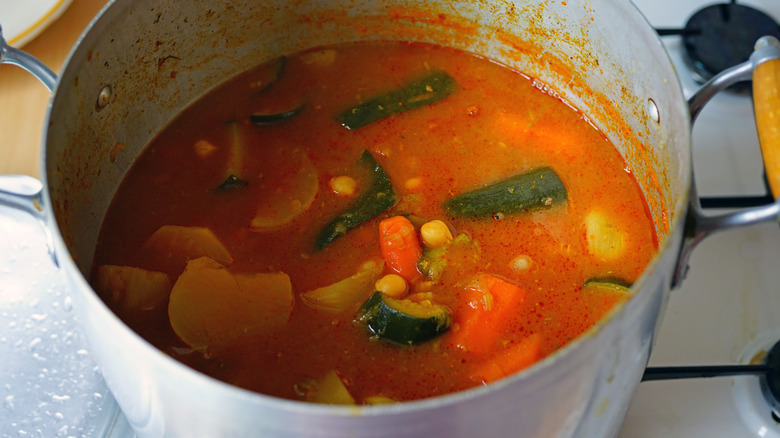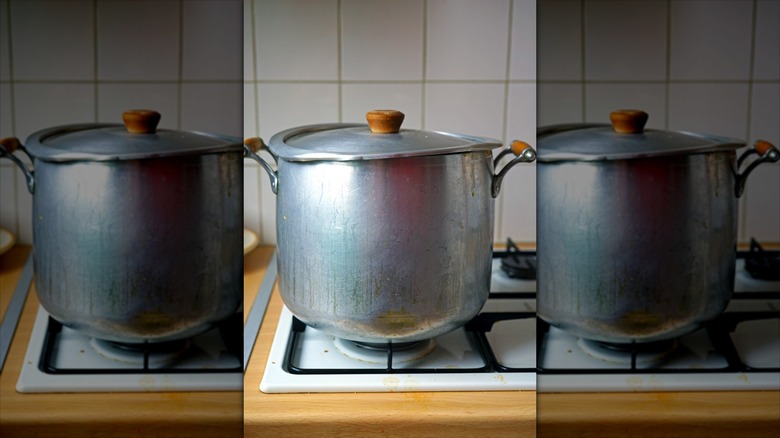The Couscoussier Is Essential Cookware In North Africa
Have you ever come across an image of a colorful plate of perfectly fluffy Moroccan couscous and thought to yourself, "Mine never turns out like that?" Or, perhaps, you've spent time exploring the vibrant, couscous-filled cities of North Africa and now long to relive the experience through a homemade serving of your own. But alas, you are only ever left with a disappointing reiteration of the real thing. Rest assured, it's not you — it's more than likely the cookware you're using, or rather, the cookware you're not using.
According to Martha Stewart, the renowned couscouses of North Africa are prepared using a double-chamber pot called a couscoussier. Made of three parts, a stockpot, a steaming basket, and a lid, a couscoussier allows cooks to steam their couscous and prepare the stew that goes on top of it simultaneously. Usually, the stockpot will be filled with water or broth, along with a selection of vegetables, spices, meats, and bouquets of cilantro and parsley. As the mixture heats up, the steam evaporates to gradually cook the couscous.
A couscoussier is just what you need to level up your couscous game, but there are a few things to know about it first.
Couscoussier tips
While Martha Stewart claims the majority of the couscoussiers you'll find on the market are made from stainless steel, they're also commonly made out of copper and the traditional terra-cotta. Generally, the stainless steel couscoussiers are the most affordable, with the copper kinds being more expensive (per The Spruce Eats). Each of these will come with the same three parts, to be used the same way. However, none of them are designed to cook the instant couscous and you'll want to use traditional couscous instead.
Traditional couscous — whether it's the Moroccan, Lebanese, or Israeli variety (via Bob's Red Mill) — is best prepared using a couscoussier because it steams each individual grain until they're plump and soft, without becoming soggy or sticky, according to Taste of Maroc. But it is important to take note of which kind of couscous you are using because they will require different amounts of liquid and steaming time. Once you've determined how much water you should be using for your couscous, there are a few other tips to take into account.
First, be sure to seal the space between the steamer and the stockpot, per The Spruce Eats. This will ensure all of the steam goes up towards the couscous. You should also make sure that the stockpot isn't too full, so that the steamer is not touching any of the liquid. Finally, you should cook the couscous uncovered to prevent it from becoming heavy and wet.

